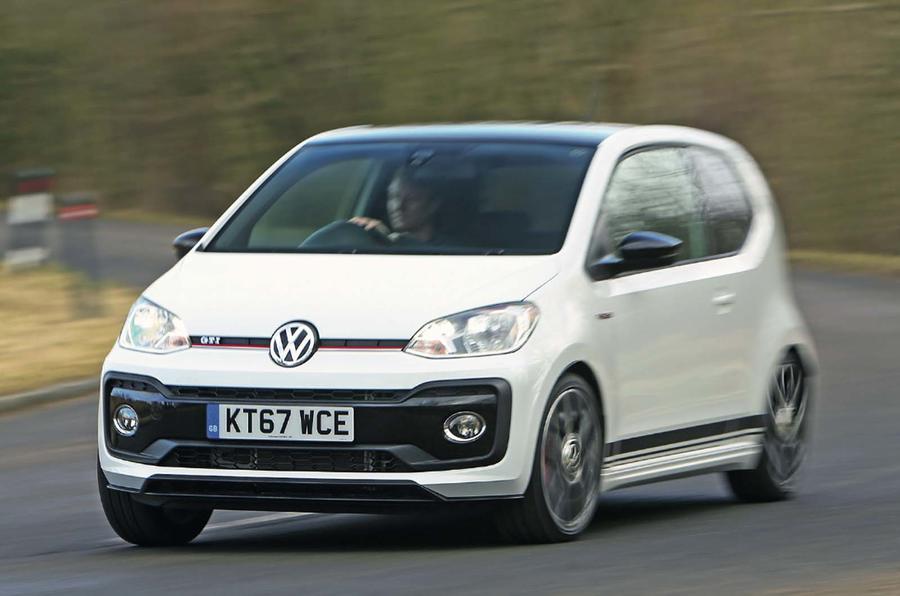I read that Volkswagen has had to increase Up GTI production volumes in response to customer demand, even having to go so far as pausing orders so it could rejig output on the line.
The wait is now five months, which is still a rather long time for a city car with a modest power output. To which I say: good.
I’m really pleased to see the Up GTI doing well. Not because I think it’s a world-beating car (although it’s very good), and not because I’m in love with Volkswagen (it has a lot to answer for) or because I have shares in the company (if I did, I’d be sacked).
No, there’s one number that makes me glad that the Up is popular: 113bhp. That’s the power output of the GTI’s 1.0-litre engine and I’m thrilled to see a car with so little power make a real go of being fun, and ending up massively popular as a result of it.
It’s the same ethos that means I’m more excited about a McLaren 600LT than I am about the Senna. Why I’d take a Toyota GT86 or Subaru BRZ over a Honda Civic Type R or Ford Focus RS. Why the Ford Fiesta ST would prove more fun, more often, than an Audi RS4. Having a car whose performance is usable is much better than potency that isn’t.
Less is, officially, more. You know it, I know it, Up GTI buyers know it. And I just hope that more and more people begin to know it too.
HORSING AROUND
I’ve floated this idea before and I’ll float it here again. Is it time, I wonder, for Autocar to lose its commitment to old-school imperial bhp and replace it with rounded hp, as used in most other countries?
There is, for reasons too complicated and boring to go into, a difference between our nags and continental European nags, which are 1.4% weaker than the Queen’s horses (and, incidentally, America’s ones, which are the same as ours).
We use bhp because we have done so for ages, in the same way that we road test cars with two occupants aboard even though our datalogging systems no longer need a passenger to run them, because it’s important we maintain consistency.
But our use of brake horsepower means that a 200hp car is actually a 197bhp car, so many modern model denominations make no sense. A 180 TDI is actually a 178 TDI by our book. And someone who makes a 1000hp car is actually making a 986bhp one, which sounds a bit daft.
The fact is, production tolerances mean there’s probably more disparity from any given engine’s quoted output, in hp or bhp, than there is from applying the calculation. Fill with poor or great fuel and a car’s ECU might detect it and adjust the ignition and thus power peak by more than that 1.4%, too. You’re infrequently at peak power anyway. And when you are, if you can tell the difference between 300bhp and 296bhp, then, well, road test jobs are available.









Join the debate
Add your comment
Someone yesterday on the
Someone yesterday on the Autocar comments was complaining that a base business spec MINI would 'only' produce 101bhp, I was trying to argue that the point of a small underpowered car is about fun, rather than all out "lose your licence" horsepower.
I Usually Agree with Mr Prior...
... but not this time! Power is good. More power is better! I want my next car to have so much power I'm scared to completely depress the accelerator pedal. I'm thinking something with a twin turbo LS...
Yesterday
I had a drive in my mates 11 plate Nissan GTR.
My god. Brutal.
But you couldn't drive round like that all day, 1) You'd probably get knicked
2) You'd probably get injured or dead, or injure/dead someone else
3) You'd be stressed to hell every time you went out.
Fast cars are great but they entice you to do things you really shouldn't.